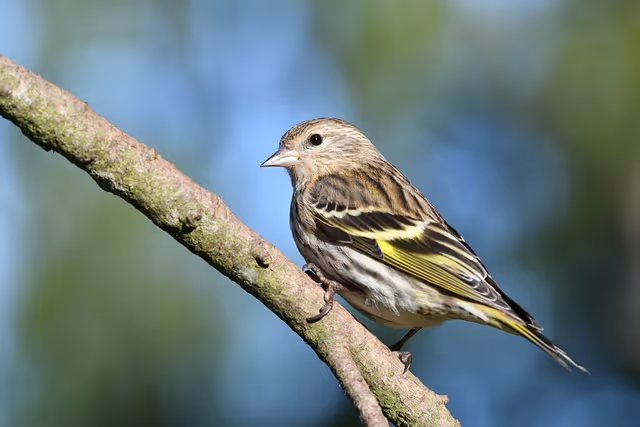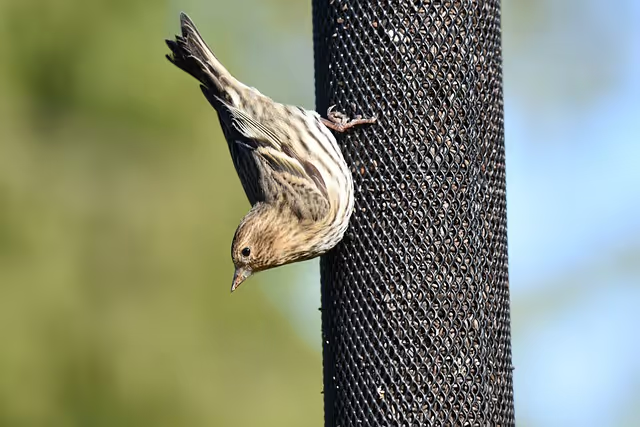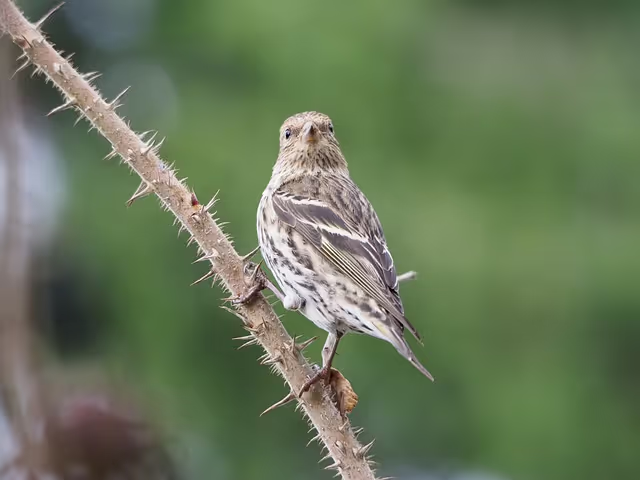Pine Siskins



Pine Siskins (scientific name Spinus pinus) are birds that are as abundant as they are erratic. Some years, they come south from their primary breeding grounds in Northern Canada in large numbers. In other years, they are few and far between. After winters where they come in droves, a few may remain to nest in the United States. A migration map produced by The Audubon Society has the birds listed as being common in all seasons in Western Washington. Therefore, it is very possible that some Pine Siskins may have taken up year round residence here. It would be hard to blame them because it's not as cold here as it is in Northern Canada, but not as warm as it is in most of their winter ranges, which includes most of the United States. That being said, Pine Siskins are perfectly capable of getting through cold nights. They do this by ramping up their metabolic rates to a level that is forty percent higher than the metabolism of a “normal” songbird of their size. That rate can go up even further on the coldest of nights.

Pine Siskins make their habitats in wooded and weedy areas. They particularly like Conifer and Alder trees, but also enjoy areas with a variety of tree species. They typically live around the edges of these areas or in clearings. While migrating and during the and winter, they move to semi-open areas, the edges of woodlands, and weedy fields. Although Pine Siskins are patterned like Sparrows, their shape, call notes, and actions all come together to reveal that this bird is more closely related to Goldfinches than they are to Sparrows. After nesting, Pine Siskins move out into territory that is semi-open, where they roam in twittering flocks. They often descend on fields of wild sunflowers and thistles, where they cling to the dried flower heads while eating seeds. Sometimes, they hang upside down in order to reach the seeds. They also forage in trees, weeds, and shrubs. Additionally, they like to eat out of bird feeders in the winter. If you want to attract Pine Siskins to your bird feeder, birdseed, thistle, and vegetable matter may do the trick. They may also be attracted to salt. Their natural diet is mostly made up of seeds and vegetable matter, but also features insects, buds, flower parts, nectar, young shoots, and alder, spruce, and birch trees.
The Pine Siskin often changes its breeding range from year to year. They may nest in isolated pairs or in loose colonies. Courtship and formation of pairs often begin in flocks that form for the winter months. Males fly in circles above females, singing with their wings and tails spread widely. The nest site is generally well hidden in a tree on a horizontal branch that is located well out from the trunk. The nest can be located ten to forty feet above the ground, but can be lower or higher if the birds feel it necessary. The female builds the nest. The nest is generally a large but shallow open cup of twigs, rootlets, grass, and strips of bark. It is lined with feathers, animal hair, and moss.
Pine Siskins lay anywhere from two to five eggs. The eggs are pale greenish blue in color, with black and brown dots concentrated at the larger end of the egg. The incubation process is handled by the female and typically takes thirteen days to complete. The male helps out by feeding the female during the incubation process. After the eggs hatch, the female initially spends most of her time brooding her young at first, while the male brings food. As time goes on, both the male and female work to feed the young. The young leave the nest about two weeks after they hatch.

Pine Siskins are more suited to clinging to branch tips than to hopping along the ground. They flash yellow wing markings as they flutter while feeding or when they explode into flight. Flocks of Pine Siskins are gregarious, and you may even hear their insistent wheezy twitters long before you see them. To help you spot them, listen for a harsh, distinctive "watch-winding" call (the sound can be compared to the sound that you make when you tear a sheet of paper in two) amidst their constant flock twitters.
While Pine Siskins are members of the Finches family of birds, they are also songbirds. They are small with short, notched tails and sharp, pointed bills that are more slender than the bills most other finches have. In flight, their tails are often forked, and their wingtips are pointed. look for their forked tails and pointed wingtips. Pine Siskins are 4.3 to 5.5 inches (11 to 14 centimeters) in length, and weigh 0.4 to 0.6 ounces (12 to 18 grams). Their wingspan is 7.1 to 8.7 inches (18 to 22 centimeters). Pine Siskins are brown, streaky birds with subtle yellow edgings on their wings and tails.
References
© Ian D. Caldwell, February 2021
Touch whale bones, examine shipwreck artifacts and connect with the coast's living history.

Support our mission, get involved in educational programs, or contribute through donations and volunteering.